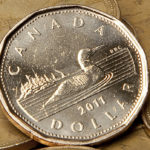Australian dollar traded in proximity to lows unseen in three months against its US rival on Thursday, after a report showed that Australias trade balance produced a larger-than-expected deficit in October and ahead of the US GDP report, due out later in the day.
AUD/USD fell to a session low at 0.9014 at 0:36 GMT, also the pairs lowest point since September 3rd, after which consolidation followed at 0.9034. Support was likely to be received at September 3rd low, 0.8972, while resistance was to be met at December 4th high, 0.9138.
According to a report by the Australian statistics bureau, nation trade balance registered a wider deficit than projected in October. The figure reached 0.529 billion AUD in October, which marked a 22nd consecutive month with a deficit, from a revised up deficit of 0.271 billion AUD in the preceding month, while analysts had expected a deficit at the amount of 0.375 billion AUD.
In October exports dipped 0.1%, while imports climbed 0.8%. The export figure decreased mostly due to a weaker export of farming goods and of services. At the same time, import of products used in manufacturing and import of consumer goods rose. Exports towards China, however, increased 6.8% in October compared to a month ago, after in September it fell 1.6%. Export of iron ore towards China rose 17% in October, but this gain has been neutralized by a drop in iron ore export towards Japan and South Korea. Coal export towards South Korea soared 82% to reach 116 million AUD in October.
This report came out one day after it became clear that Australias Gross Domestic Product grew at a lesser than expected pace during the third quarter of the year compared to the preceding quarter. The GDP figure rose 0.6% in Q3, following a revised up 0.7% growth in Q2, while preliminary estimates pointed a 0.7% gain in the third quarter.
Australian annual GDP expanded 2.3% in Q3, which marked a third consecutive quarter during which economic growth remains below 2.5%, following a revised down 2.4% growth from a 2.6% pace previously in the second quarter of the year. The annual GDP for Q3 came also below experts’ median estimate of a 2.6% growth.
“There are still so many Aussie shorts in the market not just against the dollar but also against the kiwi and pound,” said Kara Ordway, a currency strategist at City Index Group Ltd. in Sydney, cited by Bloomberg News. “The Aussie is a risk currency and it’s taken the brunt of the U.S. dollar move higher, but on top of that, there’s the domestic story, which is very weak.”
The yield on Australian three-year government bonds climbed three basis points, or 0.03 percentage point, to reach 3.11%. The yield on nations 10-year government bonds rose to 4.385%, or the highest level since November 2011.
Meanwhile, the annualized Gross Domestic Product of the United States probably grew 3.1% during the third quarter of the year, according to the median estimate of experts, as the preliminary data pointed an economic growth of 2.8%. The official figure is scheduled to be announced at 13:30 GMT.
Elsewhere, the Aussie was little changed against the euro, with EUR/AUD cross ticking up a mere 0.02% on a daily basis to trade at 1.5061 at 7:50 GMT. AUD/NZD pair was gaining 0.07% to trade at 1.1028 at 7:52 GMT.





